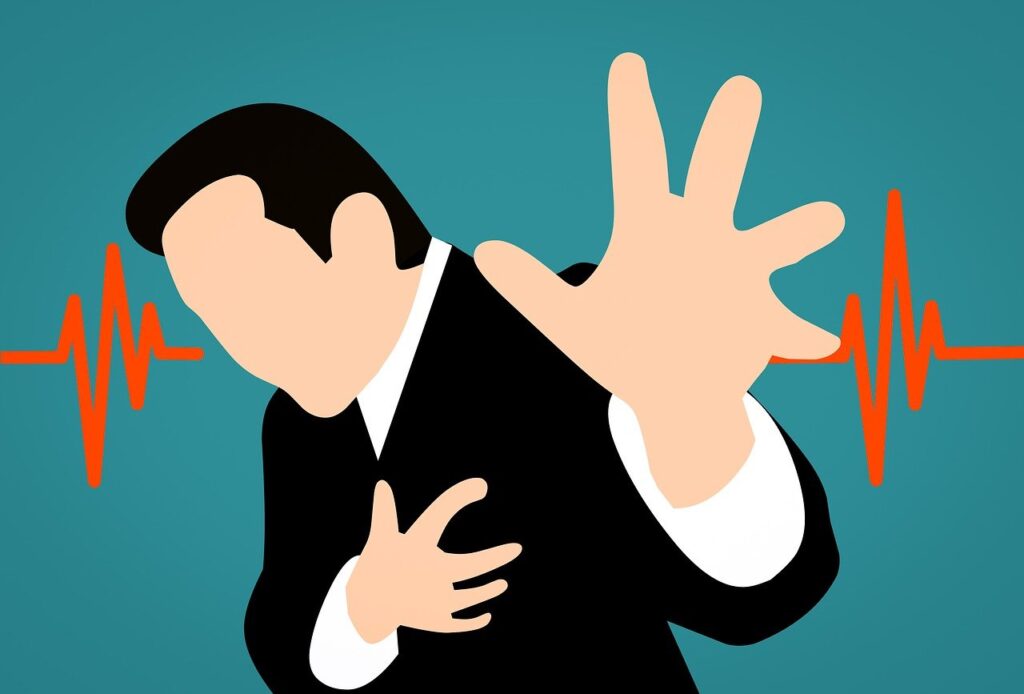Chest tightness is a discomforting sensation or inflammation characterized by pressure, constriction, or a feeling of fullness in the chest. It can be a result of various conditions, such as anxiety, asthma, heart issues, or muscle strain. Managing chest tightness is important for your overall well-being and can significantly improve your quality of life. In this post, I will explore effective methods and strategies to relieve chest tightness, providing insights and elaborative examples for a comprehensive understanding.
1. Deep Breathing and Relaxation Techniques
One of the simplest and most effective ways to relieve your chest tightness is through deep breathing and relaxation techniques. Deep breathing helps you calm your nervous system and reduces tension in the chest muscles.
Diaphragmatic Breathing: Sit or lie down comfortably, placing one hand on your chest and the other on your abdomen. Take a slow, deep breath in through your nose, allowing your abdomen to rise, then exhale slowly through your mouth. Repeat this for a few minutes.
2. Exercise and Physical Activity
Regular exercise can help to improve your lung capacity, reduce muscle tension, and alleviate chest tightness. Incorporating cardio exercises and activities that promote stretching and relaxation can be particularly beneficial.
Walking: Engage in brisk walking to improve your blood circulation and promote relaxation, which can alleviate chest tightness.
3. Hot Showers or Steam Inhalation
Warmth and moisture can help relax the chest muscles and ease tightness. Taking a hot shower or inhaling steam can be soothing and comforting for you.
Steam Inhalation: Boil water and transfer it to a bowl. Lean over the bowl, cover your head with a towel, and inhale the steam slowly. This can help you to relieve chest tightness caused by congestion or respiratory issues.
4. Over-the-Counter Medications
Certain over-the-counter chest pain medications can provide you with temporary relief from chest tightness, especially if it’s due to minor muscle strain or inflammation.
Nonsteroidal Anti-Inflammatory Drugs (NSAIDs): Medications like ibuprofen (e.g., Advil) can help reduce inflammation and relieve chest tightness resulting from muscle strain.
5. Stress Management and Mindfulness
Stress and anxiety often contribute to chest tightness. Learning to manage stress through relaxation techniques and mindfulness practices can be incredibly helpful.
Progressive Muscle Relaxation (PMR): PMR involves tensing and relaxing muscle groups progressively throughout the body. This technique can help reduce overall muscle tension, including chest tightness.
6. Proper Posture and Body Mechanics
Maintaining good posture and body mechanics can prevent or reduce chest tightness associated with poor alignment or muscle strain.
Ergonomic Workspace: Adjust your workspace ergonomically to maintain proper posture, preventing chest tightness resulting from hunching over a desk.
7. Hydration and Humidification
Keeping the body well-hydrated and maintaining a humid environment can prevent dryness in the respiratory tract, reducing the likelihood of chest tightness.
Drinking Warm Liquids: Consuming warm liquids like herbal tea or warm water can soothe the throat and alleviate chest tightness caused by dryness.
8. Consulting a Healthcare Professional
If chest tightness is persistent, severe, or recurrent, it’s essential to consult a healthcare professional for a thorough evaluation and appropriate guidance.
Doctor’s Visit: A healthcare professional may conduct tests, such as chest X-rays or ECGs, to diagnose the cause of chest tightness accurately. They can then recommend specific treatments or therapies based on the diagnosis.
Before I Forget!
Relieving chest tightness involves a combination of strategies, including breathing techniques, exercise, stress management, posture improvement, and sometimes over-the-counter medications. It’s important to find what works best for you and to consult a healthcare professional if chest tightness persists or worsens. By incorporating these methods into your daily routine, you can effectively manage chest tightness and improve your overall well-being.
You can manage your health with health nutrition, check out our amazing health plan.
Navigate to www.medicalantidote.com for additional health articles.


